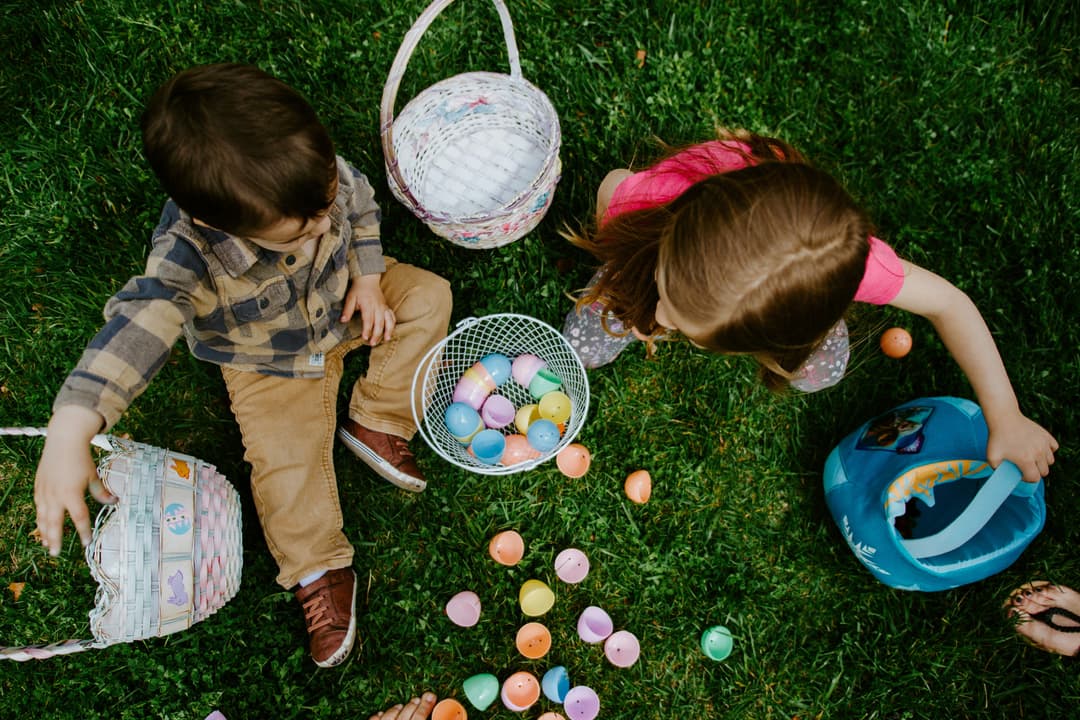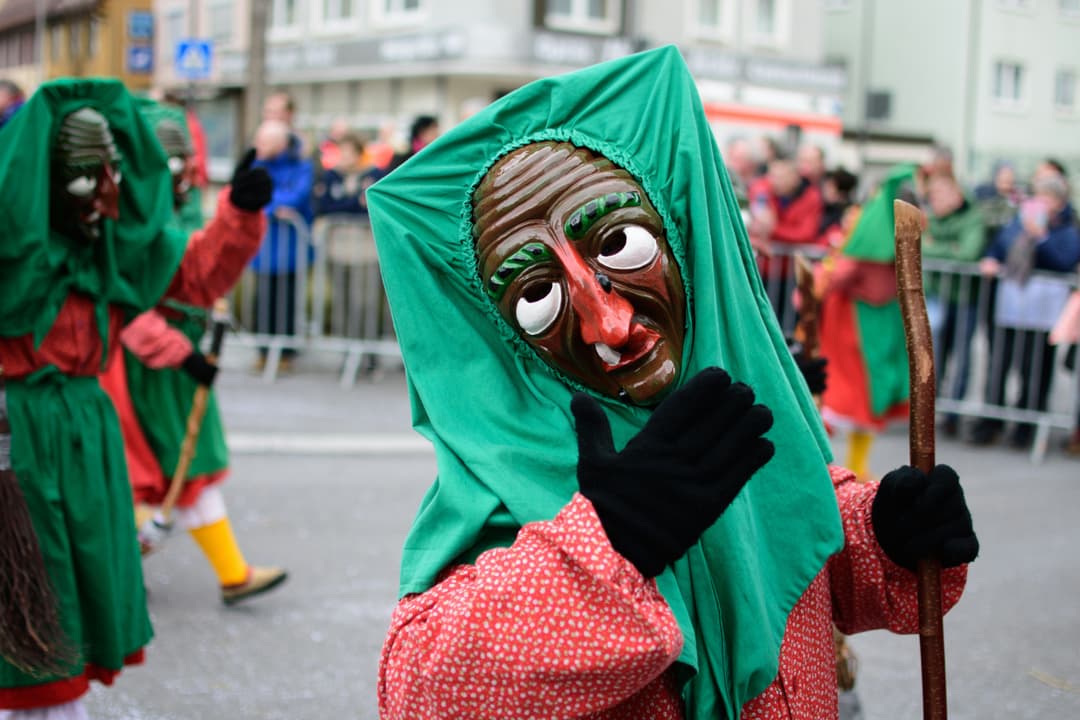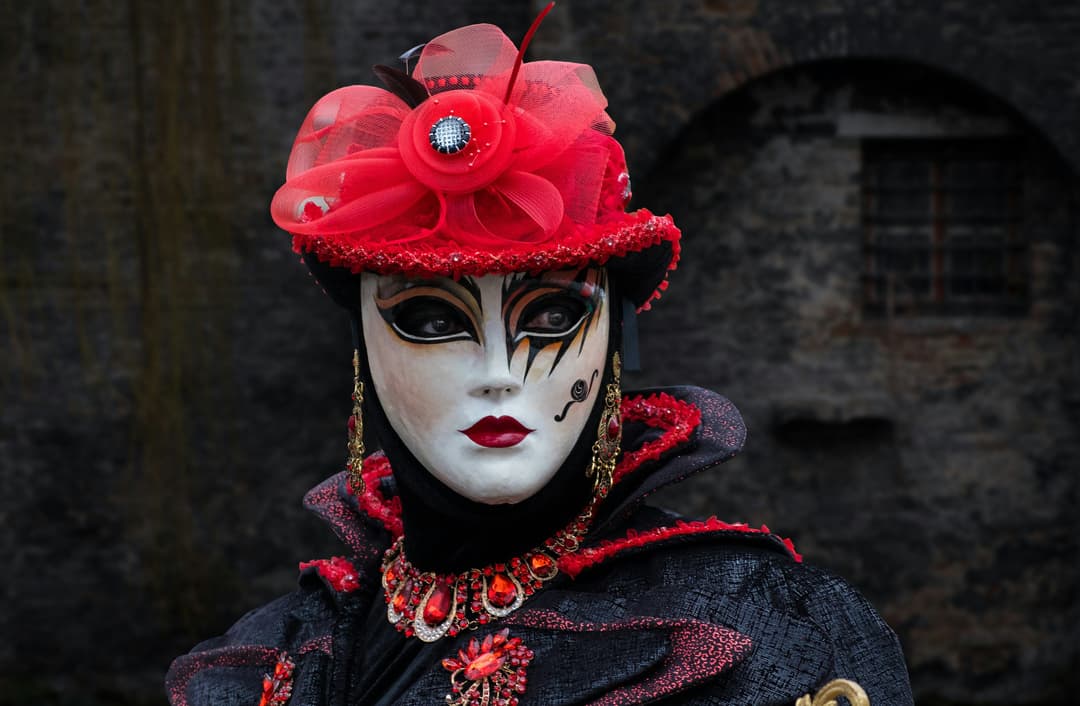
The Book
World Book Day, on the 23rd of April, is a celebration that reinforces the importance of reading in our lives. As well as being a source of knowledge and entertainment, reading plays a crucial role in people's socio-emotional and cognitive development. By immersing themselves in different stories and perspectives, readers develop empathy, an understanding of the world around them and problem-solving skills. What's more, reading is a powerful ally for mental health, providing moments of relaxation, escapism and reflection. To encourage the habit of reading, it is essential to create a favourable environment at home, at school and in the community. This can include making a variety of accessible books available, organising book clubs, promoting literary events and highlighting the benefits of reading at different ages. In addition, it's important for adults to lead by example, showing the pleasure and benefits that reading brings to their own lives. By making reading an integral part of everyday life, we can cultivate a more informed, creative and emotionally healthy society. Reading tips! For children: 1."Bear is a Bear" by Karl Newson and Anuska Allepuz: Tells the story of a bear who experiences a range of emotions throughout the day, showing how feelings can change and how to deal with them. 2."The Feelings Book" by Todd Parr: This book presents emotions in a simple and positive way, with vibrant illustrations and comforting messages. For adults: 1."Emotional Intelligence" by Daniel Goleman: A classic on the subject, it explores how emotions affect our behaviour and relationships, and how to develop emotional skills for a more balanced life. 2."The Gifs of Imperfection" by Brené Brown: In this book, the author discusses the importance of accepting our vulnerabilities and dealing with emotions authentically, fostering a greater connection with ourselves and others. 3."The Power of Now" by Eckhart Tolle: Although not specifically about emotions, this book addresses the importance of living in the present moment and how this can positively impact our emotional well-being.
Mar 29, 2024

Easter at Home: The Charm of Traditions that Unite Generations
Have you ever stopped to reflect on the true meaning behind the celebration of Easter? Far beyond the colorful chocolate eggs and sugared almonds, Easter is a festivity filled with history, symbolism, and traditions that span centuries and intertwine with our deepest family memories. Since my childhood days, Easter has always been a magical and emotionally charged time for me. It goes beyond the simple act of enjoying a piece of chocolate or embarking on an egg hunt. This celebration has always held deep meaning and a special touch, thanks to the tireless dedication and unconditional love of my mother. I vividly recall the sunny Easter afternoons when our garden would transform into an enchanted setting, filled with mystery and surprises. The egg hunt was not just a game but a tradition meticulously planned by my mother. She would strive to hide the eggs in surprisingly creative spots, craft enigmatic clues, and even leave little treasures and treats along the way. Every detail was carefully thought out to turn the egg hunt into an exhilarating and unforgettable adventure for all of us. But the magic of Easter in our family extended beyond just the egg hunt. It was a celebration of gathering, connection, and gratitude for life. It was the sacred moment when we would come together around the table to share infectious laughter, tell enchanting stories, reminisce about precious memories, and strengthen the emotional bonds that tie us together as a family. And what a wonderful Easter meal it was! The unmistakable aroma of oven-roasted lamb, mouth-watering homemade sweets, and deliciously crafted desserts were more than just dishes; they were tangible manifestations of my mother's love, care, and dedication. Each delicacy served at the table not only honored our family's culinary traditions but also symbolized the deep desire to provide a unique, meaningful, and affectionate gastronomic experience. For me, the true charm of Easter lies in the traditions that span generations, connect us with our roots, and remind us of the fundamental importance of family, love, and resilience. It is a time of spiritual and emotional renewal, where we can pause to reflect on lessons from the past, celebrate the joys of the present, and nurture hopes and dreams for a future full of possibilities and love.
Mar 28, 2024

Carnaval in Brazil
February in Brazil usually goes along with Carnaval, one of the most famous events of my beloved country. Images of the colorful costumes and street parades are very recognizable almost all over the world. Maybe you’ve heard some Samba music or even traveled to Brazil during Carnaval and experienced for yourself this fervorous party that lasts for days on end throughout the whole country. However, very few people understand what Carnaval actually is: Why does it happen? When did it start? How does a whole country stop for a week to dance and get drunk? Even I, who grew up in Brazil, didn’t know the answer for these questions until my adult years. In fact, a lot of Brazilians grow old without knowing why they spend a week per year wearing funny costumes and jumping along with loud music. Therefore, in this article, I will explain a little bit about the origins, the motive and the experience of Carnaval in Brazil. The word “Carnaval” has its origins in Latin language. “Carne Vale”, means “farewell to meat”. This is because Carnaval originated as a festival that happened 3 or 4 days before a period of religious abstinence of meat and sex, which Catholics call “Quaresma” in Portuguese or “Lent” in english. During this time, people would organize enormous parties and banquets as a form of consolation for the period of abstinence ahead. Versions of this event can be traced all the way back to babylonian times and usually happened also as a celebration of the end of winter in the northern hemisphere. That is why many European countries have their own versions of Carnaval, with the most famous one among them being the Venetian Carnaval, from which much of the modern aesthetics of this event are borrowed. Carnaval was brought to Brazil initially by Portuguese colonizers under the name “Entrudo” which signifies an “entry” into the period of Lent. Just like everything else that was brought to Brazil, Carnaval mixed itself with all sorts of different cultural traditions from the peoples that inhabited the land, such as the native peoples of Brazil and the African descendants that were brought in as slaves. The latter group contributed the most iconic element of Brazilian Carnaval, Samba music and dance. Although Carnaval looks and sounds different depending on the region of Brazil you go to, the most internationally famous version is the one that happens in Rio de Janeiro. In Rio, Carnaval is all about the competition of the Samba schools, each representing a different neighborhood in the city. These schools spend the whole year crafting songs, decorating cars and coreographing dances that will be shown during a beautiful parade at Avenida Marquês de Sapucaí. Still a question remains: Why do Brazilians take a whole week of the year to party even if most of them don’t abstain from meat and sex during Lent? That is very simple. We love music, dance, and parties. It liberates us, and we will take any chance to do it, anytime.
Jan 30, 2024

Beneath the mask
In the intricate tapestry of human existence, the concept of masks or alter egos plays a pivotal role, offering a fascinating lens through which we can explore the dynamics of human psychology. Far beyond the realm of masquerade balls and theatrical performances, the use of masks in our everyday lives serves as a coping mechanism, a protective shield, and a tool for self-discovery. Human society is inherently complex, with myriad expectations and norms dictating acceptable behavior. In this intricate web of social interactions, individuals often find themselves donning metaphorical masks to navigate various situations successfully. This phenomenon is rooted in the psychological need for acceptance and social validation. The mask serves as a buffer between one's authentic self and the external world, allowing individuals to conform to societal expectations without sacrificing their core identity. Whether in a professional setting, social gathering, or intimate relationship, the mask becomes a tool for harmonizing individuality with societal demands. The human psyche is a delicate balance of emotions, and navigating the tumultuous waves of feelings can be challenging. In times of stress, grief, or conflict, the alter ego or mask serves as a protective mechanism. Individuals may adopt a facade to shield their vulnerability, projecting an image of strength or composure. This not only safeguards one's emotional well-being but also facilitates effective interpersonal communication. The mask becomes a shield against judgment, criticism, or emotional harm, allowing individuals to regulate their emotions in a controlled manner. Paradoxically, the mask can also be a tool for self-discovery. As individuals experiment with different personas, they unveil facets of their personalities that might remain dormant in their authentic selves. The alter ego becomes a canvas for exploration, a space to test boundaries, and a mechanism for understanding the depth and breadth of one's identity. Through the adoption of various masks, individuals can confront and reconcile conflicting aspects of their personalities, fostering a more integrated and self-aware sense of self. The dark side of masks: While the use of masks can be psychologically beneficial, it is essential to acknowledge the potential pitfalls. Excessive reliance on masks may lead to a disconnection from one's authentic self, creating a sense of identity crisis. The perpetual need to conform to societal expectations or maintain a facade can contribute to mental health issues, such as anxiety and depression. Striking a balance between the convenience of masks and the authenticity of self-expression is crucial to maintaining a healthy psychological equilibrium. In conclusion, the psychological need for masks or alter egos in our lives is deeply ingrained in the intricate fabric of human existence. These metaphorical masks serve as indispensable tools for navigating the complexities of social interactions, managing emotions, and embarking on a journey of self-discovery. While masks offer protection and flexibility, it is imperative to tread carefully, ensuring that the balance between authenticity and societal conformity is maintained. The human psyche's ability to don and discard masks reflects the remarkable adaptability and resilience inherent in our species, ultimately contributing to the richness and diversity of the human experience.
Jan 30, 2024

A Closer Look at Schema Therapy
In the intricate tapestry of our minds, certain patterns or "schemas'' can significantly influence our thoughts, emotions, and behaviors. Schema Therapy, developed by Dr. Jeffrey E. Young, offers a unique and comprehensive approach to understanding and transforming these deeply ingrained patterns. This therapeutic modality has gained prominence in recent years for its effectiveness in addressing long standing emotional issues and promoting lasting change. Understanding schemas: Schemas are structures of meaning (or beliefs) that shape our perception of ourselves, others, and the world around us. These structures often stem from past experiences, evolve throughout an individual's life, and contribute to the development of coping mechanisms. While some schemas are adaptive and assist us in navigating the inevitable challenges of life, others may be maladaptive, less helpful, and can lead to difficulties in interpersonal relationships, work, and overall well-being. Schema modes: Schema-Focused Therapy introduces the concept of schema modes. While the schema is viewed as a crystallized, stable, enduring structure that is impervious to experience, the schema mode is seen as a more abstract entity that integrates and operationalizes the activation of multiple schemas. These are characterized as cognitive, emotional, and behavioral/coping response states experienced moment-to-moment. These Schema Modes are developed through experience and are triggered by life situations that evoke painful memories (accompanied by equally difficult-to-regulate emotions). The modes can also be characterized as non-adaptive when they do not contribute to the individual's effective functioning and well-being. The less adaptive side of schemas: Dr. Young, the founder of Schema-Focused Therapy, identified 18 specific maladaptive early schemas that can compromise individuals' functioning. These maladaptive schemas include enduring themes such as abandonment, defectiveness, grandiosity, mistrust, or emotional deprivation. Recognizing these patterns is crucial for learning how to break the cycle of repeated negative experiences that contribute to suffering and emotional dysregulation. Schema Therapy principles: Identification and Exploration: The first step in Schema Therapy involves identifying and exploring these deeply rooted schemas. Through a collaborative process between the therapist and the individual, past experiences and their impact on current functioning are carefully examined. Validation and Empathy: Schema-Focused Therapy emphasizes the validation of the individual's emotions and experiences through the therapeutic relationship. The therapist plays a crucial role in building a therapeutic alliance by providing empathetic support and creating a safe environment for the exploration of vulnerable aspects. Cognitive, Behavioral, and Experiential Techniques: Drawing from various therapeutic approaches, Schema Therapy integrates cognitive, behavioral, and experiential techniques to challenge and modify maladaptive schemas. These techniques aim to break the cycle of negative thought patterns and promote healthier ways of thinking and behaving. Limited Reparenting: This innovative concept involves providing the emotional support and guidance that may have been lacking in the individual's previous experiences. The therapist takes on a nurturing role to address the client's unmet emotional needs, promoting a sense of security, empathy, and acceptance. Application and effectiveness: Schema-Focused Therapy has proven to be particularly effective in the treatment of more chronic conditions, such as borderline personality disorder, dysthymia, and interpersonal difficulties. By addressing the roots of emotional suffering, this therapeutic approach goes beyond mere symptom management, creating more enduring positive changes. In the realm of psychological interventions, Schema Therapy stands out as a holistic and integrative approach that delves deep into the layers of our psychological makeup. By unraveling maladaptive schemas and fostering a sense of restructuring, integration, and acceptance, individuals can develop the capacity to flexibilize the influence of past experiences and embark on a journey towards a life aligned with their values. As the field of psychology evolves, Schema-Focused Therapy continues to stand out as a promising tool for emotional regulation and, consequently, for improving quality of life and mental health.
Jan 30, 2024

White January: Mental health care from January to January
The beginning of a year! January is a month that many reflect on life, goals and changes. In January, people have the feeling of a fresh start, lots of plans and a new lifestyle. This climate was the basis for people to start the year also thinking about their mental health. It is possible to experience some melancholy or anguish during the New Year, and January is a time when many people are still weakened by this. So this is the ideal time to seek professional help and start taking care of your mind. The month of January was chosen for the White January campaign because it symbolizes a fresh start and to draw attention to mental health from the beginning of the year. Being mentally healthy, according to the World Health Organization (WHO), is the state of well-being in which a person is able to perform their skills, deal with life's concerns, is able to work productively and contribute to their community. The White January campaign suggests that, at the beginning of the year, we all take some measures to improve our mental health: Reflect: with the arrival of the new year, are you ready to become a new person? So, take advantage of the moment of reflection to think about what you can change in your life to be happier. Accept cycles: just like the years that begin and end, life is also made up of cycles. Therefore, understand that if you are in a bad moment, it will pass. And a next stage, of reconstruction and joy, will arrive. So take the opportunity to prepare for the next cycle that will begin! Prepare to act: the habit of meditating and reflecting on what is happening to you is essential to achieving the mental state you desire. So, what can you do, what thoughts can you have, that can lead you to a healthier and happier life? You don't have to do everything alone. One of the objectives of White January is to demystify psychological support as a tool for caring for and maintaining good mental health. Assessing your capabilities includes seeking appropriate professional help to care for yourself. May this January be the beginning of many positive changes in your life.
Jan 8, 2024

Embracing the new year: Navigating inner conflicts and unresolved issues
As we welcome the new year, it's natural to reflect on the experiences that shaped our growth in the previous year. Let's explore how to deal with what we left behind, the persistent internal conflicts and unresolved issues we carry with us. Starting a new year often involves looking back on what has happened. However, it is crucial to distinguish between what we can control and what is beyond our control. As Viktor Frankl wisely observed, "between the stimulus and the response, there is a space. In that space lies our power to choose our response." Recognizing this freedom of choice is the first step towards letting go of what no longer serves us. Some experiences from the previous year can linger, shaping our outlook and influencing our emotional well-being. By cultivating gratitude and acceptance, we can begin to mold a more resilient mindset towards what we carry with us. Internal conflicts often arise from unmet expectations and challenged self-perceptions. By exploring these common patterns of dysfunctional thinking, we can develop strategies to challenge and modify negative thoughts, promoting a healthier view of ourselves and the world around us. Unresolved issues can persist as sources of ongoing stress. Dealing with unresolved issues by expressing authenticity and emotions is an effective approach to transforming challenges into opportunities for personal growth. When dealing with internal conflicts and unresolved issues, it is vital to adopt constructive coping strategies. Mindfulness practice, based on the Buddhist tradition, offers techniques for cultivating full attention to the present moment, reducing rumination about the past and anxiety about the future. By letting go of what no longer serves us, it is essential to embrace hope and tranquility. By focusing our attention on our strengths and the support of interpersonal relationships, we can face the new year with renewed optimism. At the start of this year, I invite everyone to commit to the journey of self-knowledge and growth. By confronting our inner conflicts, resolving unfinished business and cultivating a positive mindset, we build the foundations for a year full of possibilities and achievements. With renewed hope and peace of mind, we wish you a new year full of success and emotional well-being. References: Frankl, V. E. (1984). Man's Search for Meaning. Beacon Press. Rogers, C. R. (1959). A theory of therapy, personality, and interpersonal relationships, as developed in the client-centered framework. In (ed.) S. Koch, Psychology: A Study of a Science. McGraw-Hill. Seligman, M. E. P., Steen, T. A., Park, N., & Peterson, C. (2005). Positive psychology progress: Empirical validation of interventions. American Psychologist, 60(5), 410–421.
Jan 8, 2024

A wish for you
As we approach the end of 2023, I'd like to reflect with you on the challenges and achievements that have marked this year. The past year has undoubtedly been full of diverse experiences that have shaped our individual and collective journeys. Now, with the arrival of 2024 in sight, it's the right time to reflect not only on the difficulties faced, but also on the opportunities for growth that have arisen. This period of transition invites us to consider how we can improve our approach to ourselves and others by focusing on core values. Over the past year, every challenge overcome, and every moment of overcoming has contributed to our collective resilience. Expressing gratitude, even in the face of adversity, can be a valuable tool for strengthening our spirit and maintaining a positive outlook. In a world that is increasingly connected virtually, the importance of genuine interpersonal relationships cannot be underestimated. In 2024, I invite you to invest time not only in external connections, but also in understanding yourself more deeply. By nurturing this inner relationship, we can promote stronger foundations for meaningful and healthy relationships. Accepting the complexity of life and embracing our imperfections are crucial aspects of the path to self-knowledge. In the coming year, I propose that we commit ourselves to practising self-compassion, recognising that vulnerability is an inherent part of the human experience. As we prepare to welcome 2024, I wish each of you a year of balance, learning and meaningful moments. May we cultivate relationships that bring lightness to our journeys and may this new year provide us with opportunities to achieve our goals. May 2024 be a chapter of serenity, growth, and success for all of us.
Nov 28, 2023

How to manage different Christmas traditions
Christmas is a special time of the year, the lights start to twinkle, the music resounds that the date is coming, decorations in the streets and houses, lots of joy, warmth and celebration, full of traditions and rituals. Apparently, this period is full of emotional and social stimuli, triggering deep memories and evocations in most people. For children it can be very magical, and for adults quite nostalgic. Memories play a vital role in the way people perceive and celebrate Christmas. Past experiences, whether from childhood or significant moments during the Christmas season, shape everyone's traditions and expectations. However, for many people it can be a date with a very different meaning, full of challenges, feelings of sadness and doubts, especially when it comes to reconciling different family, cultural or religious traditions or dealing with the absence of people who won't be there that year. When you're creating your Christmas with a new family or group, you'll probably also want to keep some of your favourite traditions, and if you're a growing family, you'll want to keep that tradition going for future generations. Just as you may have inherited traditional Christmas decorations from your culture or family, customs are also important. These might include listening to Christmas music, decorating a tree or lighting an advent candle during dinner every night. Things that happen in the outside world and society's expectations can make Christmas harder to cope with. For example: feeling pressure to have fun and look happy. Dealing with the different expectations and practices can be emotionally challenging. Here are some tips to help make Christmas a time of harmony and understanding. Communication and empathy: Communication is the key to dealing with differences. Be honest and try to have open conversations about family traditions, without judgement. Listen attentively and show empathy when discussing how each person feels about the traditions. Recognising and validating each other's feelings is essential to finding a balance. Flexibility and understanding: Being flexible is the key. It won't always be possible to adhere to all the traditions of all the cultures or families involved. Try to find a balance where everyone feels included and respected. Respect for diversity: It's crucial to respect cultural and religious differences. Christmas can have different meanings and practices for different people. Appreciating and learning about different traditions can enrich the celebration, creating an atmosphere of respect and tolerance. Creation of new traditions: Encourage the creation of new traditions that combine elements from different cultures or family practices that integrate the best of all practices, allowing everyone to feel included and respected. This can involve preparing special meals, exchanging meaningful gifts, or charitable and leisure activities. Creating new memories can promote strong bonds between people in a unique way. Self-care and stress management: Dealing with different expectations can be challenging. Practise self-care. Take time for yourself, practise relaxation techniques, exercise and maintain healthy habits to deal with stress. Allow yourself to be alone if that is your intention. Identification of values: Identify and emphasise the values common to all the traditions involved. Values such as love, generosity, family unity and compassion are often shared between different cultures and can serve as a basis for celebration. Managing different traditions at Christmas requires understanding, flexibility and openness to new perspectives. Celebrating diversity can enrich the Christmas experience, making it a time of connection and unity between different cultures and traditions. It's an opportunity to create new memories, making this season a true celebration of joy and love. Merry Christmas!
Nov 28, 2023
